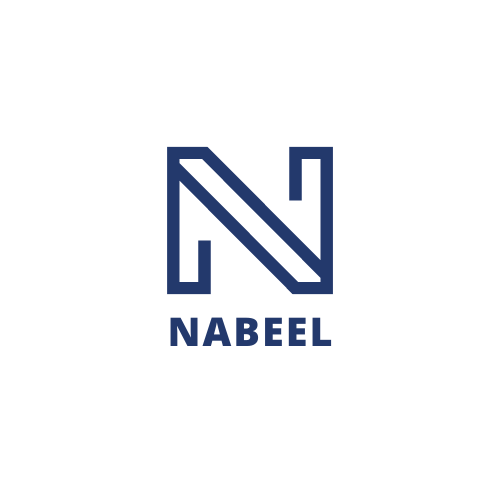An In-depth Look at Microsoft Teams vs. Slack in 2025
In the rapidly evolving landscape of digital communication tools, Microsoft Teams and Slack have emerged as frontrunners. As we navigate through 2025, the choice between these two platforms becomes increasingly pivotal for businesses aiming to optimize productivity and collaboration. This blog post delves into the features, differences, and unique offerings of Microsoft Teams and Slack, helping you make an informed decision for your organization. 🌟
Table of Contents
1. Introduction
2. Microsoft Teams: A Comprehensive Overview
3. Slack: A Comprehensive Overview
4. Key Features Comparison
5. Pricing Structures
6. Integration Capabilities
7. User Experience and Interface
8. Security and Compliance
9. Conclusion
10. FAQs
Introduction
As we look at the communication tools that define our workspaces, Microsoft Teams and Slack stand out with their robust features and user-friendly interfaces. While both platforms offer seamless communication, there are distinct differences in their offerings that cater to diverse business needs. Whether you prioritize comprehensive integration with Office 365 or the flexibility of third-party app integrations, understanding these differences is crucial. Let’s explore how each platform has evolved and what they offer in 2025. 🕵️♂️🔍
Microsoft Teams: A Comprehensive Overview
Microsoft Teams, part of the Microsoft 365 suite, has solidified its position as a powerhouse in digital collaboration. In 2025, Teams continues to leverage its tight integration with Microsoft Office applications, offering a seamless experience across Word, Excel, and PowerPoint. With a focus on enterprise-level security and compliance, Teams is a top choice for large organizations that prioritize data protection and regulatory adherence. 📈🔒
Microsoft Teams also emphasizes video conferencing, with features like Together Mode, which enhances virtual meetings by creating a more engaging, inclusive experience. The platform’s AI-driven capabilities, such as real-time transcription and translation, further elevate its utility for global teams. 🌐
Slack: A Comprehensive Overview
Slack, renowned for its intuitive interface and versatile integrations, remains a favorite among startups and tech-savvy enterprises. In 2025, Slack continues to prioritize customization, allowing users to tailor their workspace with a myriad of third-party apps. This flexibility is a significant draw for businesses that rely on specialized tools and services. 🛠️
Slack’s strength lies in its ability to foster collaboration through channels, threads, and direct messages, creating a dynamic and engaging user experience. The platform’s commitment to innovation is evident in features like Workflow Builder, which automates repetitive tasks, enhancing productivity and efficiency. ⚙️💡
Key Features Comparison
While both platforms offer a suite of compelling features, their core strengths lie in different areas:
Microsoft Teams:
– Deep integration with Microsoft Office 365
– Advanced video conferencing capabilities
– Enterprise-level security and compliance features
Slack:
– Extensive third-party app integrations
– Highly customizable workspace
– Innovative workflow automation tools
Pricing Structures
Cost is often a deciding factor for businesses choosing between Microsoft Teams and Slack. Here’s a breakdown of their pricing models in 2025:
Microsoft Teams:
Included with Microsoft 365 subscriptions, making it a cost-effective choice for existing Microsoft customers. Standalone plans are available for businesses seeking specific features without a full Microsoft 365 subscription.
Slack:
Offers a free tier with basic features, while paid plans provide enhanced capabilities, such as increased storage, priority support, and advanced security features. The pricing is tiered based on the number of active users, allowing businesses to scale their investment.
Integration Capabilities
Both Microsoft Teams and Slack excel in integration, but their approaches differ:
Microsoft Teams:
Seamlessly integrates with Microsoft Office applications and services, making it ideal for businesses heavily invested in the Microsoft ecosystem. New in 2025 are enhanced integrations with AI-driven tools and analytics platforms, providing deeper insights and smarter collaboration.
Slack:
Boasts a vast library of third-party app integrations, from project management tools like Asana to customer support platforms like Zendesk. Slack’s open API allows developers to create custom integrations, offering unparalleled flexibility for diverse workflows.
User Experience and Interface
When it comes to user experience, both platforms have made strides in 2025:
Microsoft Teams:
Features a polished, professional interface with a focus on organizational hierarchy and structured communication. The addition of AI-driven personalization enhances the user experience by tailoring content and notifications to individual preferences.
Slack:
Continues to champion simplicity and ease of use, with a clean, vibrant design. The platform’s emphasis on user-friendly navigation and quick access to essential tools makes it a favorite for teams that value speed and efficiency.
Security and Compliance
In an era where data security is paramount, both Teams and Slack prioritize protecting user information:
Microsoft Teams:
Offers robust security features, including end-to-end encryption, multi-factor authentication, and compliance with industry standards like GDPR and HIPAA. These features make Teams a secure choice for organizations handling sensitive data.
Slack:
Provides enterprise-grade security with features like data encryption, SSO, and compliance with various data protection regulations. Slack’s continued investment in security ensures it remains a trusted platform for businesses of all sizes.
Conclusion
As we navigate the digital workplace in 2025, the choice between Microsoft Teams and Slack depends largely on your organization’s unique needs and existing infrastructure. Teams excels with its comprehensive integration with Microsoft services and robust security features, making it ideal for larger enterprises. Meanwhile, Slack’s flexibility and ease of use make it a popular choice for smaller, agile teams. Ultimately, both platforms offer powerful tools to enhance collaboration and productivity. 🤝🚀
FAQs
1. Can I use Microsoft Teams without a Microsoft 365 subscription?
Yes, Microsoft Teams offers standalone plans for businesses not using the full Microsoft 365 suite, though integration capabilities may be limited.
2. Does Slack support video conferencing?
Yes, Slack offers video conferencing features, including integration with popular video meeting platforms like Zoom and Google Meet.
3. Which platform is better for remote teams?
Both platforms are excellent for remote teams, but the choice depends on your specific needs. Teams is great for organizations using Microsoft tools, while Slack offers flexibility with its diverse app integrations.
4. How secure are these platforms?
Both Microsoft Teams and Slack prioritize security with advanced encryption and compliance with industry standards, ensuring user data is protected.
Choosing the right platform for your team can significantly impact productivity and collaboration. By understanding the distinct features and strengths of Microsoft Teams and Slack, you can make an informed decision that aligns with your business goals. 🏆



